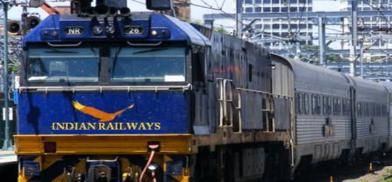India using railways to further diplomatic connections
Railways across the world have undergone a tremendous transition from an instrument of colonial exploitation to a tool of diplomatic influence, emerging as a substitute to military coercion and a more effective means of asserting influence over regions

Railways across the world have undergone a tremendous transition from an instrument of colonial exploitation to a tool of diplomatic influence, emerging as a substitute to military coercion and a more effective means of asserting influence over regions. This has been brilliantly exhibited by China with the launch of cross-border freight trains between the Chinese and European landmass passing through China, Central Asian Republics and Europe.
India is no exception to the growing importance of railway diplomacy on the cultural and economic front. Driven by the need to attain self-sufficiency, the railways embarked on a collaborative project to establish the Integral Coach Factory with Swiss aid to manufacture coaches and train manpower to manufacture coaches for the railways in 1955, followed by establishment of the Diesel Locomotive Works at Varanasi in 1961, with the help of American Locomotive Company. Thus, from an Indian perspective there is a cultural and technology based diplomatic approach when it comes to railways. The culture-based approach is on a larger scale, confined to India’s immediate neighbours which comprise Pakistan, Bangladesh and, soon, Nepal.
The India–Pakistan connection dates back to the pre-independence era when an undivided India saw train services between Mangalore and Peshawar, Mumbai and Peshawar, Hyderabad (Sindh) and Ahmedabad in the 1920s. Fast forwarding to the post-economic liberalisation era, tensions between India and Pakistan saw the closure of train operations indefinitely up to 2003 after the Kargil War of 1999. After train services were restored, the two countries signed an agreement extending train services up to 2007.
Currently two trains run between the two countries; the Samjhauta Express (from Lahore to Delhi) and the Thar Express, on the Munabao – Khokrapar Line, which was destroyed in the 1965 war. The link was restored in 2006 after gauge conversion.
After the Uri attack and Indian "surgical strikes", doubts have again risen over the scope of the train service, impacting freight and passenger traffic between them. Both sides have adopted strong measures by making visa approvals even more challenging, contributing to decline in traffic in 2016. Cultural diplomacy has, therefore, taken a backseat, hindering the expansion of cross border services between India and Pakistan.
India was instrumental in the creation of Bangladesh as an independent nation in 1971, but has also had conflict of interests, like over sharing waters of the River Teesta. However, railway diplomacy with Bangladesh has been relatively smooth with the Maitree Express starting in 2008, marking the resumption of train services after 43 years, since it was halted during the Indo – Pak War of 1965.
Currently, there are two train services operating between the two countries, the Maitree Express and Bandhan Express, with 90% occupancy in the former. The two countries are pursuing another rail link between them, with North-eastern India being the focal point of the rail link between Agartala and Akhaura, with a dual gauge system. This will provide connectivity between West Bengal and Tripura.
India and Bangladesh are now working on a proposal to introduce end to end immigration checks along the lines of practices on international flights, which will help to reduce the journey from nine seven hours. Currently, immigration checks are conducted at the checkpoint of stations, namely Gede (India) and Darsana (Bangladesh). India is also facilitating modernization of Bangladesh Railways, with greater scope for the development of freight links and improved railway systems.
Indian Railways has undergone a paradigm shift in the contemporary era. The growing need for development of infrastructure has attracted the attention of European and Southeast Asian countries.
India’s railway diplomacy with Japan dates back to 1970, with a visit by Dr. E. Sreedharan, whose name is synonymous with the Delhi Metro, to seek insights into engineering techniques of metro systems. Japan has become an influential exporter in the railroad market and, through its financial institution JICA, has facilitated building of overseas facilities through commercial aid and technology transfer.
India has also entered into agreements for manufacture of electric locomotives with Alstom, Siemens, GE and Bombardier. With the growing need to harness electrical energy and facilitate faster acceleration and deceleration and improved braking systems, the railways proposes to shift to complete electrification by 2022.
Looking at the amount of foreign investments in the last 17 years, totalling $897 million, $291 million has been in the form of equity flows between April 2014 and March 2017. The participation of countries has given further impetus to research and development. Signing of MoUs between Indian Railways and international players will enable the railways to facilitate technical visits, exchange technical experts, reports and documents and improve training programmes, feasibility studies and pilot projects.
Looking at the growing significance of the railways, India has realized the need to explore the scope of fostering diplomatic ties through railways, emulating the example of Southeast Asian and European countries. With the railways, India is using another diplomatic tool to ensure connectivity and foster ties with neighbouring countries. While keeping chances of military coercion at a minimal level, it is ensuring mutual development of global railway systems by means of import and export of railway assets between countries.
(The author is a writer on Indian Railway policies. He can be contacted at chitresh.shrivastva22694@gmail.com)








Post a Comment